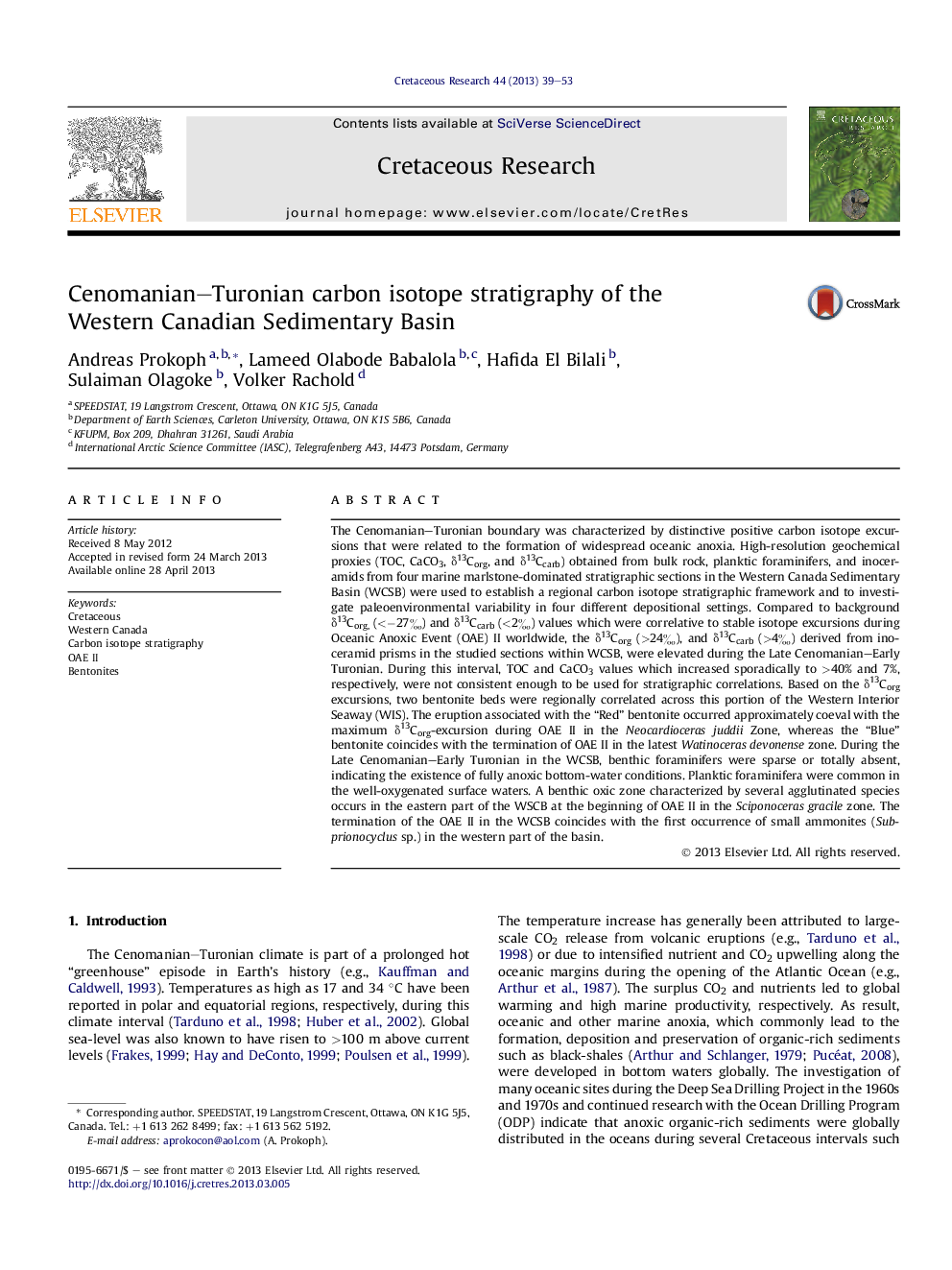| کد مقاله | کد نشریه | سال انتشار | مقاله انگلیسی | نسخه تمام متن |
|---|---|---|---|---|
| 4747230 | 1642078 | 2013 | 15 صفحه PDF | دانلود رایگان |

• A Cenomanian–Turonian carbon isotope stratigraphy for Western Canada is proposed.
• A positive d13C excursion occurred basinwide during the Oceanic Anoxic Event II.
• Three bentonites can be correlated between the USA and Canadian part of the basin.
The Cenomanian–Turonian boundary was characterized by distinctive positive carbon isotope excursions that were related to the formation of widespread oceanic anoxia. High-resolution geochemical proxies (TOC, CaCO3, δ13Corg, and δ13Ccarb) obtained from bulk rock, planktic foraminifers, and inoceramids from four marine marlstone-dominated stratigraphic sections in the Western Canada Sedimentary Basin (WCSB) were used to establish a regional carbon isotope stratigraphic framework and to investigate paleoenvironmental variability in four different depositional settings. Compared to background δ13Corg, (<−27‰) and δ13Ccarb (<2‰) values which were correlative to stable isotope excursions during Oceanic Anoxic Event (OAE) II worldwide, the δ13Corg (>24‰), and δ13Ccarb (>4‰) derived from inoceramid prisms in the studied sections within WCSB, were elevated during the Late Cenomanian–Early Turonian. During this interval, TOC and CaCO3 values which increased sporadically to >40% and 7%, respectively, were not consistent enough to be used for stratigraphic correlations. Based on the δ13Corg excursions, two bentonite beds were regionally correlated across this portion of the Western Interior Seaway (WIS). The eruption associated with the “Red” bentonite occurred approximately coeval with the maximum δ13Corg-excursion during OAE II in the Neocardioceras juddii Zone, whereas the “Blue” bentonite coincides with the termination of OAE II in the latest Watinoceras devonense zone. During the Late Cenomanian–Early Turonian in the WCSB, benthic foraminifers were sparse or totally absent, indicating the existence of fully anoxic bottom-water conditions. Planktic foraminifera were common in the well-oxygenated surface waters. A benthic oxic zone characterized by several agglutinated species occurs in the eastern part of the WSCB at the beginning of OAE II in the Sciponoceras gracile zone. The termination of the OAE II in the WCSB coincides with the first occurrence of small ammonites (Subprionocyclus sp.) in the western part of the basin.
Journal: Cretaceous Research - Volume 44, August 2013, Pages 39–53